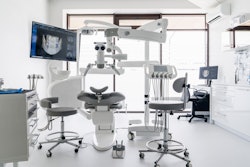Private practice owners, dental group operators, and dental service organization (DSO) executives can struggle with knowing which metric will move the needle and help them achieve their financial goals.
 Jill Nesbitt.
Jill Nesbitt.
Jill Nesbitt, founder of Optimize Dental Consulting, and Dee Fischer, founder of Fischer's Professional Group, are experts at reviewing technology and workflows to drive efficiency and significantly impact key performance indicators (KPIs).
They share these tips for knowing where to begin, and they are hosting a workshop on February 7 in Smyrna, GA, for small-group operators with fewer than 10 practices.
KPI review and benchmarking
A common mistake that managers and owners make is focusing on the wrong KPIs, Fischer said. For example, the team may focus on whether the schedule is filled but not on the types of procedures that have been scheduled. Each day needs to have revenue-generating production that meets the practice’s operating requirements.
Fischer recommends practices measure the following four KPIs to ensure the business is healthy and growing:
- Case conversion percentage
- Production per hour
- EBITDA per provider
- Same-store growth
EBITDA refers to earnings before interest, taxes, depreciation, and amortization. It's calculated by starting with the net income and then adding back costs that aren't part of the daily operations, such as interest, taxes, and equipment depreciation. Once the practice has benchmarked these metrics, it can create strategies to drive change.
Technology review for automation and standardization
One strategy is to review your current processes and technology to ensure you're maximizing efficiency.
"There are so many opportunities to drive efficiency through automation now," Nesbitt said. She cites patient forms as a good example of the wide variety of technology and automation available. Here is the spectrum available today:
- Paper forms that need to be scanned into the practice management system
- Digital forms that need to be manually uploaded and attached to the patient record
- Digital forms that are automatically saved to the patient record as a PDF
- Digital forms that automatically write back into fields in the patient record and enable key data points such as medical allergies to be displayed in multiple areas of the practice management system
By taking the time to evaluate your current workflow versus available technology, practices may be able to increase efficiency and impact KPIs.
"I tie the technology and process back to the KPIs. In the case of patient forms, I'm measuring how long does it take to check in the patient? How much time was spent on data entry, scanning, and attachments? What can we implement that will make this process easier for the team and for the patient?" Nesbitt said.
Effective change management
In many practices, leaders meet to discuss their processes and the data, but they don't take the next step, Fischer said.
 Dee Fischer.
Dee Fischer.
"There needs to be a plan for implementation and accountability. Each step needs to be mapped out and assigned to a team member to carry out the process and report back," Fisher explained.
The key is to have clear, measurable goals, Nesbitt said.
"You don't want to say that you want to reduce your 90-day accounts receivable. You want to say that you will reduce your 90-day AR from the current rate of 59% to 15% by a specific date as a result of the action steps you outline."
The implementation and adoption plan needs to have four well-defined parts:
- How the change will benefit the team
- How the plan will be communicated
- How the plan will be implemented, with ownership assigned to each step
- How success will be measured
For the change to be successful, everyone involved needs to be committed to making the effort, Nesbitt said. And that goes back to understanding why the change needs to occur. For more strategies that will drive efficiency and revenue, visit https://www.optimizedent.com/workshop.
Beth Gaddis is the editor in chief at Planet DDS, a dental technology company specializing in cloud-based practice management systems, digital imaging, and dental marketing services. Previously, Gaddis was the marketing director for two large dental service organizations. Prior to entering the dental industry, Gaddis was a journalist for 16 years in a variety of roles, including as a TV news producer at the CBS affiliate in Boston. You can connect with Gaddis on LinkedIn.
The comments and observations expressed herein do not necessarily reflect the opinions of DrBicuspid.com, nor should they be construed as an endorsement or admonishment of any particular idea, vendor, or organization.




















